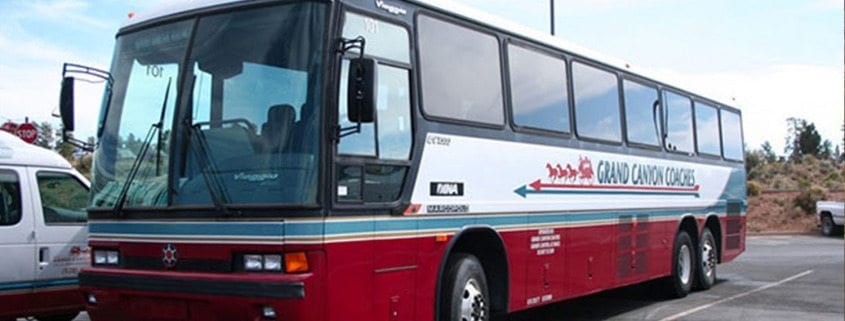Paul Revere Transportation to Stay until Late 2019
With the national park system nearing its 100th birthday, officials at the Grand Canyon National Park have been renegotiating contracts deciding who will handle services like concession and transportation. While a stagnant bidding environment forced Grand Canyon National Park officials to extend their contract with Xanterra, their current provider of concessions and lodging, choosing a new company to handle transportation wasn’t as difficult.
Since the turn of the century, Boston-based transportation company Paul Revere Transportation LLC has been in charge of driving and maintaining the Grand Canyon National Park’s 30 transit busses. On December 1st of last year, they began yet another contract to stay at the Grand Canyon South Rim until November 19th of 2019, and they aren’t just staying for sentimental reasons. Thanks in part to the hard work of Paul Revere Transportation, the park’s natural beauty has been preserved in ways that aren’t so immediately obvious.
It’s easy to forget how much pollution is released by cars since most of us use them every day, but the Grand Canyon National Park has been saved an incredible amount of air pollution thanks to the nearly 7 million people that rode together on Grand Canyon shuttle busses in 2014 alone.
Established in 1974, the Grand Canyon’s public shuttle bus is one of the most widely-used transportation systems in national parks across the country. Since the costs of operating the shuttle system are covered by entrance fees to the park, these wheelchair-accessible shuttle busses are free for visitors to use. Since 2009, the popularity of these shuttle busses has grown 40%, and thanks to two year-round routes and two seasonal routes, the park never uses more busses than it needs, further reducing pollution.
The shuttle system allows visitors to explore the park much more efficiently than they would normally be able to since a scheduled system like this decreases congestion within the park’s more popular areas, and thanks to the now-completed rim-based trail system, hikers on the South Rim will find a bus stop every half to full mile of trail, allowing people to explore as far as they like before simply sitting down to rest at a bus stop until a shuttle bus comes to take you back to more populated areas of the park.
Grand Canyon National Park Superintendent Dave Uberaga expressed his appreciation of the public transportation service within the park, saying, “Operating a shuttle bus service in a national park not only allows for ease of visitor movement, but the reduction in auto exhaust emissions leads to better air quality, less greenhouse gas emissions and improved visibility at Grand Canyon. We are excited to have Paul Revere operate this valuable service here on the South Rim as the National Park Service moves into its second century.”
If you plan on making it down to the Grand Canyon by the end of the decade, you can look forward to riding these shuttle busses yourself! How do you think the Grand Canyon Park could reduce pollution even more? Let us know in the comments section below!



 https://pixabay.com/en/grand-canyon-north-rim-geology-rock-2352805/
https://pixabay.com/en/grand-canyon-north-rim-geology-rock-2352805/